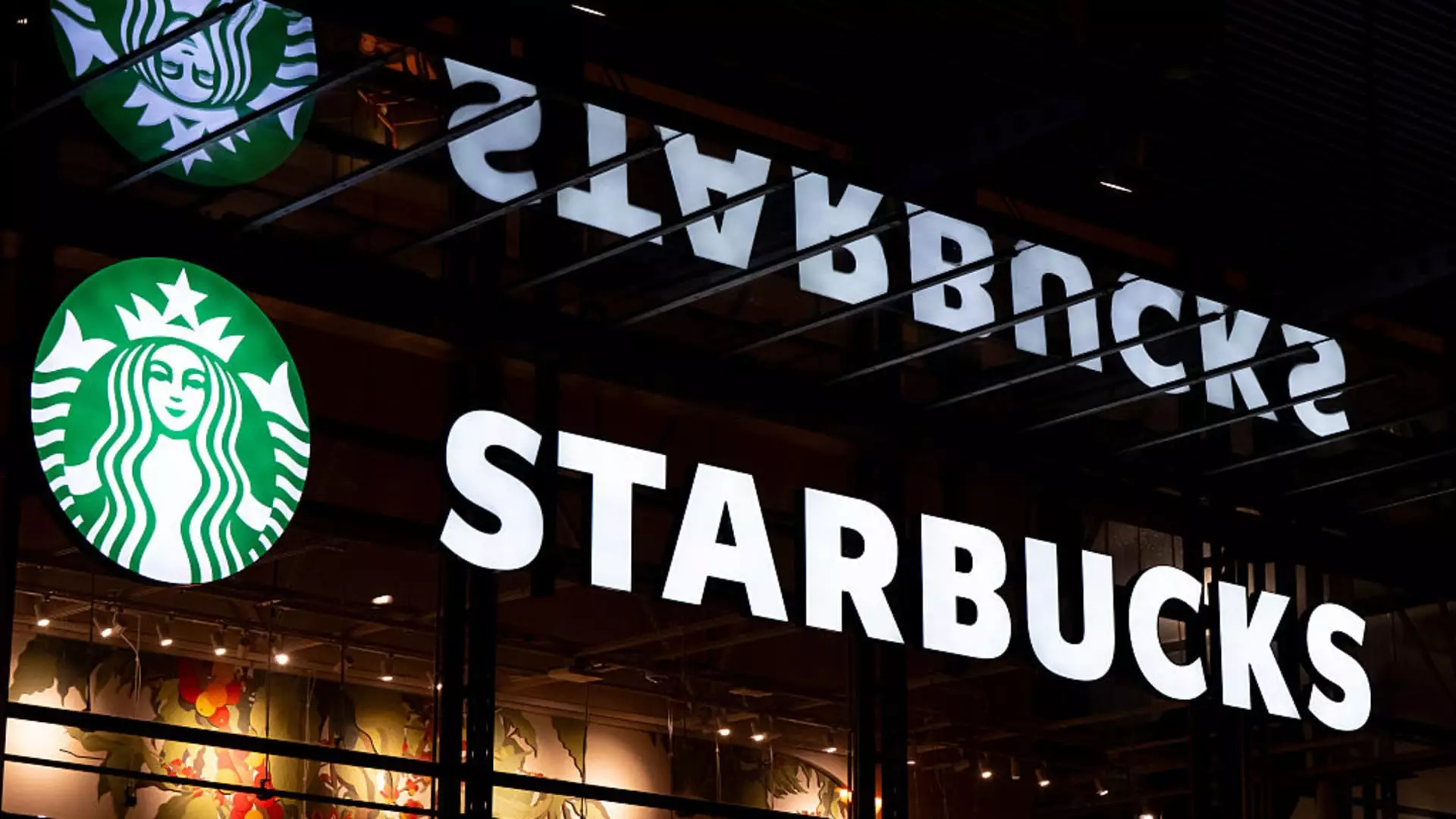The recent premarket trading activities highlight a paradox at the heart of modern capitalism: even the most established giants are vulnerable to shifts in investor sentiment. PepsiCo’s 3% gain after a robust second quarter, surpassing expectations on both earnings and revenue, is a rare beacon of confidence in a landscape increasingly dominated by uncertainty. Yet, this is less a testament to internal strength than a fleeting reflection of short-term optimism. The fact that even a diversified conglomerate like PepsiCo can rally sharply despite broader economic jitters underscores how fragile investor faith has become—driven more by momentum than fundamentals.
Meanwhile, Starbucks’ decline of 1.6% shows how quickly corporate narratives can flip. A downgrade by Jefferies signals skepticism about the company’s growth prospects. This downward move suggests that the market is increasingly skeptical of promises of continuous improvement, recognizing that many consumer brands are reaching saturation points or facing rising costs. It exposes a fundamental truth: the market’s patience is waning, and even established brands are no longer immune to the harsh realities of market expectations.
Manufacturing and Aerospace: The Surprising Bright Spots and Hidden Warnings
Taiwan Semiconductor’s 3.3% advance demonstrates the resilience of the tech supply chain and its importance to global manufacturing. Its record-breaking profit spike reveals strength in core sectors but also warns against complacency. A 61% year-over-year profit increase signals that the sector remains vital, yet it also raises concerns about overreliance on cyclical industries vulnerable to geopolitical tensions and supply chain disruptions.
Conversely, GE Aerospace’s modest 1% growth, coupled with a 2023 upward revision in guidance, illuminates the cautious optimism within heavy manufacturing sectors. The company’s ability to beat expectations showcases resilience but also hints at the increasingly competitive landscape of aerospace. The industry’s recovery is more fragile than it appears, as external factors like inflation, regulatory shifts, and international competition threaten to derail even the most optimistic projections.
U.S. Bancorp’s 4% plunge after falling short on revenue and net interest margins is symptomatic of a broader industry struggle. Banks are grappling with the real effects of rising interest rates and tightening monetary policy, which are squeezing margins at a time when economic growth is decelerating. The market’s harsh reaction underscores that financial institutions’ profits are closely tied to macroeconomic stability—something that many economists and investors now doubt will be sustained.
High-Risk Speculations and Market Overhangs
The online auto marketplace, Cars.com, and payment company Toast illustrate the contrasting fortunes of emerging sectors amid broader volatility. Cars.com’s 6% surge following a JPMorgan upgrade signals investor enthusiasm for the automotive sector’s rebound, fueled by increased inventories and optimism over tariffs. Yet, these hopes may be overly optimistic given persistent supply chain issues and economic headwinds that threaten to cap growth. The market’s quick shift to optimism on this front reflects a tendency to chase short-term narratives rather than long-term fundamentals.
Toast’s near-3% rise after Deutsche Bank’s bullish view illustrates how strategic coverage can energize promising fintech and payment companies. However, such optimism often masks underlying risks: technological disruption, regulatory hurdles, and fierce competition threaten to erode potential market share gains in the near future. Market optimism here may be well-placed or overly naive—time will tell.
Wall Street’s Skeptical Eye Turns to Consumer and Biotech Markets
United Airlines’ slight revenue miss and solid earnings highlight a disconnect that pervades sectors heavily dependent on consumer spending. The airline’s ability to beat earnings expectations shows resilience, but the revenue shortfall warns of underlying softness in travel demand. This scenario exemplifies how traditional industries are increasingly vulnerable to macroeconomic headwinds, political stability, and inflationary pressures, challenging the narrative of ongoing growth.
In stark contrast, Sarepta Therapeutics’ astonishing 29% jump underscores the unpredictable nature of biotech—where breakthroughs can catalyze rapid gains, even amid corporate restructuring. Their decision to lay off a large portion of the workforce to cut costs signals a strategic pivot that many view as necessary for survival. It also reveals the high-risk, high-reward environment of pharmaceutical innovation, where market sentiment can flip swiftly based on data releases or strategic decisions.
The decline of MP Materials and Abbott Laboratories further demonstrate the persistent capital flight from riskier or less-understood sectors. Falling after a public offering and retreating guidance respectively, they underscore that investor confidence remains fragile, especially when macro factors like interest rates and geopolitical tensions swirl. Heavyweight companies in sectors like commodities and healthcare remain susceptible to shifts in sentiment, revealing how interconnected macro and micro dynamics truly are.
In my view, this economic landscape exposes a core flaw: investor optimism is increasingly divorced from underlying fundamentals. Companies that once enjoyed stable growth are now susceptible to rapid reversals. This pattern underscores the importance of cautious optimism—an attribute often lacking in today’s market mindset. As markets gyrate, the lesson is clear: resilience demands more than earnings beats and technical rebounds; it requires a resilient, pragmatic approach to navigating a world where uncertainty is no longer an exception but the rule.

